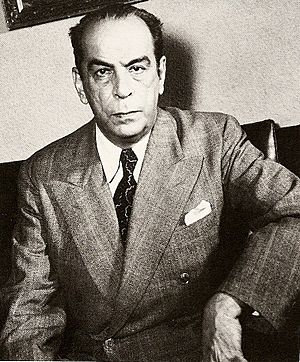Criollismo facts for kids

Criollismo (pronounced kree-oh-YEES-mo) was a popular writing style in Hispanic America from the late 1800s to the early 1900s. It's like the Latin American version of "regionalism" in American literature. Writers used a realistic style to show the everyday life, language, and customs of their home countries. They often focused on people from the countryside and lower classes. Criollismo helped create unique stories based on the natural world of the continent. It was also influenced by the wars where countries gained independence from Spain. The movement helped each country define what it meant to be "criollo" (a person of Spanish descent born in the Americas).
Contents
The Story of Criollismo
The idea of criollismo in literature first appeared in Venezuela around the late 1800s. However, it took a few decades for it to become widely known across Latin America.
Who Started It?
A writer named Luis Manuel Urbaneja Achelpohl was one of the first to use and explain the term. In an essay from 1895 called "On National Literature," he talked about the need for "patriotic affairs" and a "tropical soul" in writing. He believed that writers should focus on their own country's stories instead of just copying European styles. He said, "We are here: today as yesterday we come to advocate for essentially American art... The future is assured for us."
Famous Criollismo Writers and Books
Many important writers and their works are part of the criollismo movement. They helped shape how people saw their own cultures and landscapes.
Writers from Different Countries
- Venezuela: Luis Manuel Urbaneja Achepohl and Eduardo Blanco were key figures. Rómulo Gallegos's famous novel "Doña Bárbara" (published in 1929) is a great example of criollismo.
- Colombia: José Eustasio Rivera wrote the jungle novel "La vorágine" (1924), which means "The Vortex."
- Uruguay: Horacio Quiroga is known for his short stories, often set in the wild.
- Argentina: Writers like Ricardo Güiraldes and Benito Lynch explored rural life.
- Panama: Mario Augusto Rodriguez contributed to the movement.
- Peru: Manuel Gonzales Prada was a notable writer.
Criollismo in Chile
In Chile, criollismo changed the focus from city life to country life. It helped include the rural world in Chile's national identity. Some well-known Chilean criollista books include:
- Sub Terra and Sub Sole by Baldomero Lillo.
- Zurzulita and Cuna de cóndores (meaning "Cradle of Condors") by Mariano Latorre.
- Días de campo (meaning "Countryside Days") by Federico Gana.
- Plays like Árbol viejo and Chañarcillo by Antonio Acevedo Hernández.
See also
 In Spanish: Criollismo (literatura) para niños
In Spanish: Criollismo (literatura) para niños
- Costumbrismo
- Criollo people
- Literature of Latin America
- Venezuelan literature
- Chilean literature
- Música criolla
- Peruvian waltz

